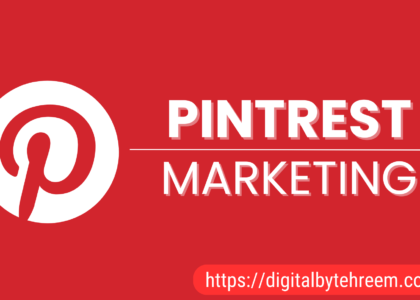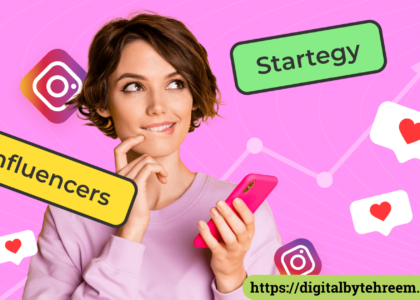Marketing can feel overwhelming for beginners. With countless strategies, platforms, and jargon, it’s easy to get lost. But here’s the good news: every successful marketing journey starts with mastering the basics and builds toward innovative breakthroughs. Whether you’re launching a startup, promoting a small business, or exploring a new career, this guide will walk you through the essentials of effective marketing—in simple, actionable terms.
Part 1: The Basics of Marketing
What Is Marketing?
At its core, marketing is about connecting your product or service with people who need it. It’s not just advertising; it’s understanding your audience, communicating value, and building relationships. Think of marketing as the bridge between what you offer and the people who will love it.
The 4 Ps of Marketing
This classic framework helps you structure your strategy:
- Product: What are you selling? Define its features, benefits, and what makes it unique.
- Price: How much will you charge? Balance affordability, perceived value, and profitability.
- Place: Where will you sell it? Choose the right platforms (online, retail, etc.).
- Promotion: How will you spread the word? Use ads, social media, content, and more.
Know Your Audience
Before you promote anything, ask: Who is this for? Create a “buyer persona” to represent your ideal customer. Consider:
- Demographics: Age, gender, location, income.
- Psychographics: Interests, values, pain points.
- Behavior: How they shop, what platforms they use.
For example, a budget-friendly skincare brand might target college students (demographics) who value sustainability (psychographics) and shop primarily on TikTok (behavior).
Part 2: Building a Strong Foundation
Craft Your Brand Identity
Your brand is more than a logo—it’s the personality of your business. Ask yourself:
- What’s your mission?
- What tone of voice will you use (fun, professional, bold)?
- What colors, fonts, and visuals reflect your values?
Pro Tip: Use free tools like Canva to design consistent branding materials.
Tell a Story
People remember stories, not sales pitches. Share:
- Your “why”: Why did you start this business?
- Customer success stories: How has your product helped others?
- Behind-the-scenes: Show the humans behind the brand.
Consistency Is Key
Use the same messaging, visuals, and tone everywhere—your website, social media, emails, and packaging. Confusing or inconsistent branding pushes customers away.
Part 3: Digital Marketing Essentials
Build a Website
Your website is your digital storefront. Keep it:
- Simple: Easy to navigate.
- Mobile-friendly: Over 60% of web traffic comes from phones.
- Clear: Include a strong call-to-action (e.g., “Shop Now” or “Subscribe”).
SEO (Search Engine Optimization)
Optimize your website to rank higher on Google:
- Use keywords (e.g., “affordable yoga mats”) in your content.
- Write meta descriptions that summarize pages.
- Add alt text to images for accessibility.
Content Marketing
Create value-driven content to attract and retain customers:
- Blogs: Answer common questions (e.g., “How to Start a Meditation Routine”).
- Videos: Share tutorials, testimonials, or product demos.
- Social Media Posts: Educate, entertain, or inspire—don’t just sell.
Email Marketing
Collect emails through your website or social media. Send:
- Newsletters: Updates, tips, and promotions.
- Welcome Series: Introduce your brand to new subscribers.
- Abandoned Cart Reminders: Recover lost sales.
Pro Tip: Tools like Mailchimp offer free plans for small lists.
Paid Ads
Start small with platforms like:
- Google Ads: Target people searching for keywords.
- Social Media Ads: Facebook and Instagram let you narrow audiences by interests.
- Retargeting Ads: Re-engage visitors who left your site without buying.
Part 4: Breakthrough Strategies for Growth
Leverage Influencers
Partner with micro-influencers (1k–50k followers) in your niche. They’re affordable and have highly engaged audiences. For example, a local bakery could collaborate with a food blogger to showcase their cakes.
Personalize Everything
Use data to tailor experiences:
- Recommend products based on past purchases.
- Send birthday discounts.
- Address customers by name in emails.
Pro Tip: Tools like HubSpot automate personalized campaigns.
Focus on Customer Retention
Acquiring a new customer costs 5x more than retaining one. Boost loyalty by:
- Offering rewards programs.
- Sending post-purchase surveys.
- Surprising loyal customers with freebies.
Experiment with Video
Short-form videos (Reels, TikTok) dominate. Try:
- Day-in-the-life clips of your team.
- User-generated content (customers using your product).
- Live Q&A sessions.
Embrace Emerging Trends
Stay curious about innovations like:
- AI Chatbots: Provide instant customer support.
- Voice Search: Optimize content for “Hey Google” queries.
- Sustainability: Highlight eco-friendly practices.
Part 5: Measuring Success
Track Key Metrics
Focus on what matters:
- Conversion Rate: % of visitors who buy or sign up.
- ROI: Revenue generated per dollar spent on ads.
- Customer Lifetime Value (CLV): Total revenue from a customer over time.
Pro Tip: Google Analytics is free and beginner-friendly.
Test, Learn, Repeat
Run A/B tests to see what works:
- Test two email subject lines.
- Compare different ad visuals.
- Experiment with pricing strategies.
Conclusion: Start Small, Think Big
Effective marketing isn’t about doing everything at once—it’s about mastering the basics, then scaling strategically. Begin with a clear brand identity, a simple website, and a focus on your audience. As you grow, experiment with advanced tactics like influencer partnerships and personalized campaigns. Remember, the best marketers stay adaptable, curious, and customer-centric.
Now it’s your turn: Pick one strategy from this guide, put it into action, and watch your breakthroughs unfold. 🚀





